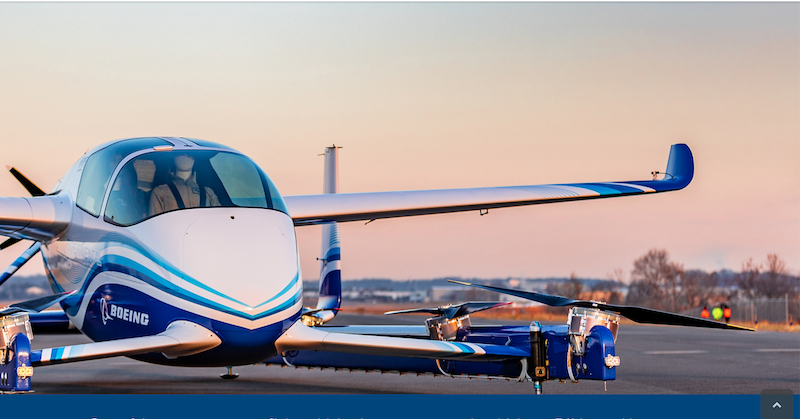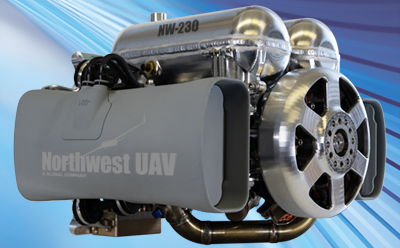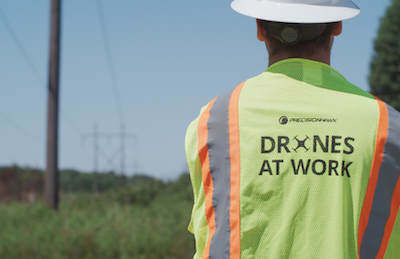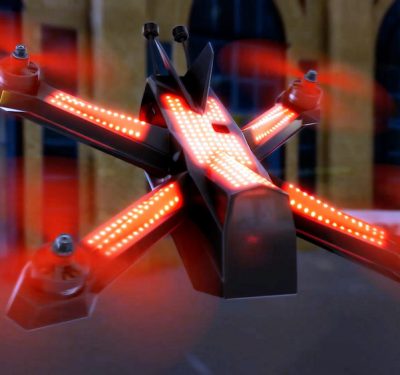
The Boeing NeXt passenger air vehicle (PAV). Photo courtesy of The Boeing Company.
The urban air mobility (UAM) market is expected to experience a compound annual growth rate of 11.33% over the next ten years, with an ultimate outlook of $15.2 billion. But to land this level of business, UAM itself needs a place to land. In the U.S., those landing locations and structures will be tied to real estate within a county, inside a city, inside a state—each of which may have completely different legal guidance concerning infrastructure integration and compliance.
Not surprisingly, the rules applicable to UAM ground infrastructure are literally all over the map, and are not forward-thinking. As Chuck Clauser, senior director of architecture at PS&S Integrated Service, noted at the recent eVTOL Infrastructure Virtual Workshop, “from an aviation standpoint, urban air does not have any federal regulations in place for any aspect of the organization: licensing, planning, operations, construction or training. We are all referencing rotary wing standards.”
Consequently, understanding existing laws will be required until new ones based on the specifics of eVTOL technology are encouraged and emerge.
If You Build It, They Will Come
Despite a multiyear glide path, a ton of activity is already propelling upward UAM movement. Three years ago, the Vertical Flight Society (VFS), the world’s oldest and largest nonprofit education organization dedicated to enhancing the understanding of vertical flight technology, began tracking publicly available information on the number of electric vertical takeoff and landing (eVTOL) aircraft companies. (Fun fact: VFS was originally known as the American Helicopter Society International.*) At the time, they discovered 169 such aircraft-in-the-making, and the number now exceeds 300.
Some heavy hitters have already entered the market, including Airbus (U.S.), The Boeing Company (U.S.), Lilium (Germany), EHang (China) and Volocopter (Germany). In September 2017, Lilium revealed its $90 million project, a five-seat flying taxi capable of vertical takeoff and jet-powered flight. In January 2020, Boeing NeXt successfully completed the first controlled takeoff, hover and landing of its prototype passenger air vehicle (PAV), a multirotor autonomous aircraft.
For UAM investments to take off, several critical milestones must be met (See the IUS article, “Crawl, Walk, Run, Fly! – Urban Traffic Milestones”). Of those, infrastructure and the laws surrounding it are where the wheels hit the ground.
Airports, Heliports and Vertiports
According to the Federal Aviation Authority’s (FAA) Airport Master Record database, an estimated 19,669 airports currently exist in the U.S. The law defines an airport as any area of land or water used or intended for landing or takeoff of aircraft, including related areas used or intended for buildings, facilities and rights of way.
Heliports are legally a subset of airports, and the FAA’s database shows a total of 5,918 heliports in the U.S. today. The FAA’s Pilot/Controller Glossary in the Airman’s Information Manual (AIM) defines a heliport as, “An area of land, water, or structure used or intended to be used for the landing and takeoff of helicopters and includes its buildings and facilities if any.” Such facilities usually include fuel and hangaring support areas.
Currently, a vertiport is legally exactly the same as a heliport—but no refueling, maintenance, repair or storage of helicopters is permitted. Interestingly, the AIM, newly updated in July 2020, does not include the term “vertiport.”
So what legal changes will vertiports require?
Powered lift infrastructure expert Rex Alexander, President and Executive Director of Fort Wayne, Indiana-based Five-Alpha and infrastructure advisor to the Vertical Flight Society, has been involved in developing heliport standards since 2009. Alexander brings 40 years of military, general and commercial aviation experience to bear on this definitional issue.
“A vertiport, by design, may very well be similar to a heliport, but will more than likely be specifically designed to accommodate tiltrotor aircraft, eVTOL vehicles and UAS cargo aircraft, as well as helicopters,” Alexander advised. “One primary factor as to what will be allowed to operate where will more than likely be an aircraft’s noise signature. Similar to a helistop, a vertistop would allow those aircraft to drop off or pick up passengers or cargo in multipurpose locations without supporting infrastructure being involved. These definitions are not codified in regulation or policy as of yet. We are using the heliport paradigm, in large part, as a template to inform our thinking about vertiports.”
For this reason, the categorization of heliports as public or private use is relevant to vertiports too. Public heliports, specifically those that receive federal Aircraft Improvement Program (AIP) funding, are subject to following all FAA standards. Private use heliports/vertiports (also known as Prior Permission Required PPR facilities) are, as the name suggests, privately owned, privately operated and require the owner’s permission for use. Out of all the existing heliport/vertiport facilities on record, 5,080 fall into the private use category, with only 58 being public use. Based on FAA records, of those 58, only three are on record as ever having receiving AIP funding.
Alexander noted the ramifications of this: “Oversight and compliance authority, as it pertains to the FAA, for eVTOL and heliport infrastructure, technically does not exist for 99.9% of the heliports in operation today.”
Rules Going Forward?
So, what rules do and will apply to vertiport infrastructure?
The FAA has produced a significant amount of guidance for heliport design, but it is mandatory only at public use facilities that have received AIP funding. Noting this, the recent VFS 2020 eVTOL Infrastructure Virtual Workshop addressed foundational elements needed to support UAM development including: fire, building and electrical code for vertiports, weather systems, acoustics and noise, urban/municipality planning and land use (https://vtol.org/events/virtual-workshop-on-evtol-infrastructure).
The National Airspace Transportation Association (NATA), a trade association representing general aviation industry experts in aircraft ground support, provides an overview of some of those standards in its UAM White Paper, “Urban Air Mobility: Considerations for Vertiport Operation.” NATA, Alexander and virtually every speaker at the VFS infrastructure event agreed that vertiport design and construction should conform to the standards and recommendations found in FAA Advisory Circular (AC) 150/5390-2C —Heliport Design Guide (April 24, 2012) (here: https://www.faa.gov/documentLibrary/media/Advisory_Circular/150_5390_2c.pdf) This AC highlights the FAA’s varying and potentially significant roles in vertiport development, including, but not limited to, providing planning recommendations and financial assistance to eligible sponsors of public use facilities, publishing design criteria, and reviewing aeronautical studies and environmental assessments. This 187-page document is a soup-to-nuts guide on everything you ever wanted to know (and more) about designing any type of heliport (general, hospital, transportation), from landing zone and lighting requirements to pavement design and instrument operations.
Meanwhile, other FAA guidance and information should also inform vertiport design thinking. The chart below provides a non-exhaustive list for planners to consider.
| Subject | Regulation | Effect |
| Airport certification | 14 CFR Part 139, Certification and Operations: Land Airports Serving Certain Air Carriers | Passenger services meeting the conditions must comply with the fire protection requirements contained therein. See also fire protection standards promulgated by the National Fire Protection Association (NFPA) and/or requirements imposed by the local jurisdictional authority |
| Commuter/
on demand |
14 CFR Part 135, Air Carrier and Operator Certification | Requires certification for helicopter operators conducting commercial flights; 135.229(a) guides proper landing/take off infrastructure |
| Airport creation | 14 CFR Part 157, Notice of Construction, Alteration, Activation, and Deactivation of Airports/ FAA Form 7480-1 – Notice for Construction, Alteration and Deactivation of Airports | Requires persons proposing to construct, activate or deactivate a vertiport to give the FAA notice of their intent. |
| Windflow | DOT/FAA/PM-84/25, Evaluating Wind Flow Around Buildings on Heliport Placement | Study on topic stated in title |
| NAS impacts | 14 CFR Part 77, Objects Affecting Navigable Airspace | Requires persons erecting/altering a structure to notify the FAA of any proposed construction or alteration which would be more than 200 feet (60 m) in height, etc.* |
| Pavement (vertipad) | FAA AC 150/5320-6, Airport Pavement Design and Evaluation | Technical guidance on pavement design |
| Winter Ops | AC 150/5200-30, Airport Winter Safety and Operations | Plowing, deicing and anti-icing considerations |
| Security | 14 CFR Part 107, Airport Security | Security requirements at vertiports having scheduled commercial service |
| Tiedowns | FAA AC 20-35, Tiedown Sense | Information on designing aircraft tiedowns |
| Fuel storage | AC 150/5230-4B, Aircraft Fuel Storage, Handling, and Dispensing on Airports | Contains guidance on fuel handling and storage (less relevant to electric aircraft*) |
| Rotorwash | DOT/FAA/RD-90/16, Evaluation of Rotorwash Characteristics for Tiltrotor and Tiltwing Aircraft in Hovering Flight | Study on topic stated in title |
| General Info | DOT/FAA/ND-96/1, Heliport/Vertiport Implementation Process-Case Studies | Study on topic stated in title |
| General Info | DOT/FAA/ND-97/1, Six Heliport Case Studies | Study on topic stated in title |
| Airspace | 14 CFR Part 70, 91 | Considerations for airspace that vertiport planners should consider |
| Single rotor heliports; heliport design | FAA AC 150/5390-2C, Heliport Design | Design guidelines for all-weather helicopter facilities (i.e., heliports and helistops with precision instrument approach capability) |
There’s more. Whether at ground level or on elevated sites, applicable state and local codes and ordinances ranging from fuel storage to fire and building codes also may apply. (Fun fact: water-based facilities are an entirely unique issue, with oceans of additional requirements*). The FAA, in a 2001 survey on private use heliports, stated that, “To the extent that they choose to do so, the design of private heliports is regulated, NOT by the FAA but by the 50 States.” At least 16 states have passed laws addressing heliports and, either explicitly or implicitly, vertiports. Illinois, for example, has a very thorough Heliport/Vertiport regulation at Title 92: Transportation, Chapter I, Department of Transportation, Subchapter b: Aeronautics, Part 14 Aviation Safety, Subpart H (here: https://www.ilga.gov/commission/Jcar/admincode/092/09200014sections.html)
However, as Alexander pointed out, “Many states have such differing standards and enforcement policies that until a more consistent application of these standards can be fostered at the state and local level, UAM developers and investors will be faced with multiple and oftentimes costly business model variations.”
Even if adopted at the federal or state level, national-level non-governmental organization codes will additionally require compliance. For example, the National Fire Protection Association (NFPA) Standard 418, Standard for Heliports, specifically states in Section 4.2.2 that “the design of the heliport, including all the aeronautical components, shall be in accordance with FAA AC 150/5390-2C, Heliport Design Advisory Circular.” Another example, the 2018 International Building Code (IBC), a modern building code under the purview of the International Code Council, has been adopted by 15 states. It addresses health and safety building concerns based on prescriptive and performance requirements. The list goes on: Occupational Safety and Health Administration, National Electrical Code, National Standard Plumbing Code, the Air Movement and Control Association International, ASTM International, International Association of Plumbing and Mechanical Officials (IAPMO), the International Green Construction Code (IGCC) and more. (Fun fact: Go green! 18 states, Puerto Rico and the U.S. Virgin Islands have all adopted the IGCC*).
Finally, most cities and unincorporated counties will have additional requirements, even if they don’t use the term “vertiport.” While some land use regulations restrict or prohibit heliports/helistops, many include these facilities either as incidental uses of a primary land use or require a Conditional Use Permit similar to a building permit. Requirements run the gamut: construction codes/permits, land use planning board or zoning board approvals, electrical codes, building codes and building use approvals addressing lot size, setbacks, building density, noise and structure heights.
It takes hours upon hours of research and digging (or consulting an attorney…) to comprehend all the above interlocking jurisdictions. Unless…
Landing A Comprehensive Solution
Despite all the intricacies, perhaps there is hope for a one-stop shop approach. The Uniform Law Commission (ULC) exists solely to provide model acts across diverse subjects for all 50 states to use to enact consistent legislation. The nation’s oldest state nonpartisan volunteer nonprofit unincorporated governmental association, the ULC, is comprised of state commissioners from each state, the District of Columbia, the Commonwealth of Puerto Rico and the U.S. Virgin Islands.
Hard legal-tech problems are squarely within the ULC’s purview. For example, in July 2019, the ULC promulgated the Uniform Automated Operation of Vehicles Act, a framework for states to plug and play provisions such as licensing, registration and equipment requirements into their own vehicle codes and taking on the tough issue of liability for autonomous cars. That same month, the ULC published a draft “Tort Law Relating to Drones Act,” proposing that states adopt a standard for aerial trespass, extending land rights to air, without any height limitations.
Given its mission to provide “secure uniformity of state law when differing laws would undermine the interests of citizens throughout the United States,” the ULC tends to step in when a patchwork of different state laws crops up, creating compliance challenges. With the right participants, the ULC could offer a well-vetted option for vertiport legislation.
The ULC prides itself on openness and transparency, using its public-facing website as a repository of drafts of any model act, all interested parties’ submitted comments, and open meeting notes.
The creation of a model act takes about two years because a draft must be addressed at two separate annual meetings of the ULC before it can be formally adopted as final and ready for adoption by the states.
But to Rex Alexander, creation of a uniform law at the state and municipality level governing vertiport infrastructure is one of the key linchpins to success. “Uniformity and certainty in vertiport regulations, ordinances and zoning across states and jurisdictions is critical to unlocking Urban Air Mobility and advancing this industry. In the case of the helicopter industry today, each of the 50 states, to include the thousands of municipalities across the U.S., have a vast number of differing rules and regulations governing helicopter infrastructure. Given the tendency for most helicopter operations to be located within a specific geographical region, the business model for the majority of these operators is not negatively impacted by this fact.
“This however will not hold true for the majority of Urban Air Mobility operators, who are seeking to conduct business in multiple states and geographic regions. These differing laws, regulations, and ordinances will require operators to create a multitude of strategies and business plans specifically tailored to fit each individual site of operation. This in turn will drive up cost and create significant time delays, as well as restrict and possibly prevent operations, ultimately discouraging operators from attempting to pursue business opportunities in these locations.
“For those states and municipalities looking to attract and foster this new transportation model in their area, the time is now to begin the collaborative effort necessary to develop a standardized approach to implementation, oversight and governance.”
Time to Launch!
Flying blind on vertiport design is a non-starter, but navigating the expanse of federal, state, local and municipal requirements isn’t much better. Until the FAA, ULC or Congress provides a long-term comprehensive regulatory solution to clearly guide UAM infrastructure, industry participants can deploy design using a do-it-yourself plan or better yet work with an industry expert.
Also, state and local aviation, transportation and land-use planning and zoning agencies can provide critical guidance on local building codes and land-use regulations impacting vertiport siting and development. So, let’s get underway on the right vertiport infrastructure solution, to launch this industry sooner versus later!
*The views and opinions in this article are those of the author and do not reflect those the DOD, do not constitute endorsement of any organization mentioned herein and are not intended to influence the action of federal agencies or their employees.
Dawn M.K. Zoldi (Colonel, USAF, Retired) is a licensed attorney and a 25-year Air Force veteran. She is an internationally recognized expert on unmanned aircraft system law and policy, a recipient of the Woman to Watch in UAS (Leadership) Award 2019, and the CEO of P3 Tech Consulting LLC.






